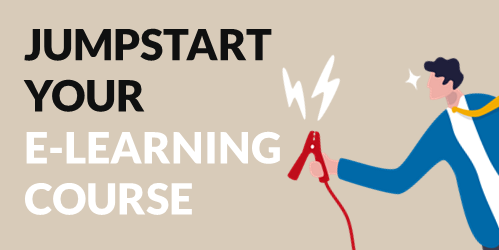
I get a lot of questions from organizations that are at the beginning of their eLearning journey and aren’t quite sure how to get started. The following tips are three key considerations to get your program moving in the right direction.
What type of course are you building?
I like to keep things simple. Generally, there are two types of courses that are built: explanation and performance.
- Explanation courses present key content critical to the learning experience. This can be content like user manuals, video tutorials, company policies, etc. These courses generally combine content with context. For example, an expository course not only shares information, but adds context to the relevance of the information. But they generally stop short of sharing content and don’t include relevant practice opportunities.
- Performance courses focus on performance expectations. What should the student do? How can I learn it in the course? What activities are incorporated into the course so that the student can practice and demonstrate their skills and understanding?
Both types of courses have value. However, if you have clear performance expectations and are building an explainer-type course, then you need to determine what extracurricular activities are necessary for the student to practice and prove.
Craft Clear course Expectations
The ultimate goal is not to build a course. Instead, the course is a solution to achieve the end goal. Therefore, the ultimate goal should be determined and clearly stated. After a person takes the course, what should they do?
It is likely that many of the explainer courses that have been created have nothing to do with “what should be done”. And that is why many online courses are not effective.
- Create a clear goal.
- Determine how to measure it on and off the track.
- Build practice activities and assessments that provide evidence of understanding.
- Connect with a team that can provide metrics outside of the course so you can validate success.
Build around student expectations
This part is a bit challenging because courses are often designed around content presentation rather than student expectations. We have all received annual compliance training. The content is valuable, but it is usually not framed in a way that is relevant to the learner. It is content that is mostly relevant to the organization and is designed that way.
However, the organization pays you to do the course which costs money. And then your course distracts people from productive work which also costs money. If you have a 60-minute course and 100 people need to take it (assuming the average cost per employee is $100); that’s about $600,000 per 100 people. That’s a lot of money. Is your course getting at least $600,000 in value?
You may not be able to control whether a course gets built or not, but you can certainly advocate for the best type of course to be built. And the best kind of course takes into account the learner and how relevant and meaningful the content is.
Obviously, there’s a lot more to consider when launching your eLearning program. A key consideration is whether the course is built around the expected performance and then designing a product that meets those goals.
What would you add to this list if someone asked you about starting an eLearning program?